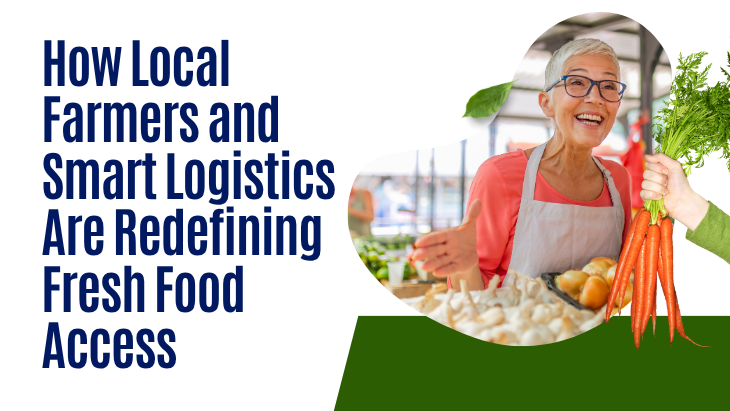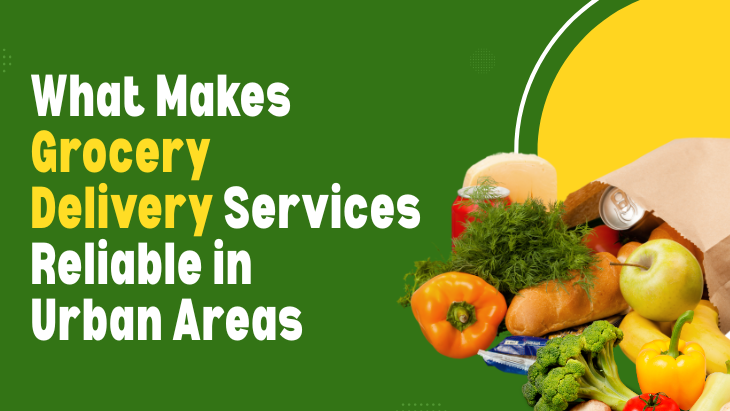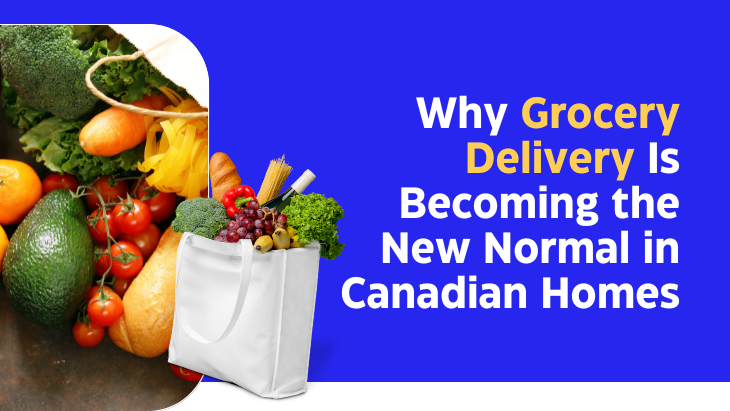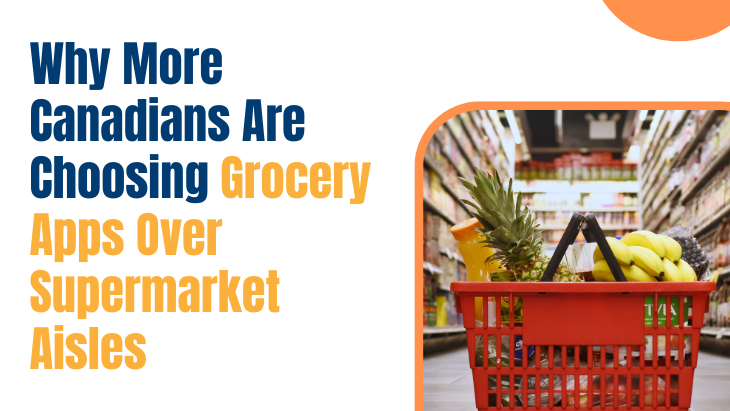A basic human need is fresh, wholesome food, but many Canadians have struggled to consistently obtain it, particularly in rural or underdeveloped areas. Grocery Delivery Services In Canada Fortunately, innovations in smart logistics combined with local farming initiatives are radically changing how Canadians receive and consume fresh food. The growing integration of grocery delivery services in Canada is at the core of this change, making it simpler, quicker, and more sustainable to deliver farm-fresh produce directly to consumers' doors.
The Local Farming Movement Is Growing
In recent years, there has been a discernible shift towards supporting local farms, continuing Canada's long history of agricultural excellence. Today's consumers are more conscious than ever of the origins and cultivation methods of the food they eat. Local farming is on the rise in many provinces as a result of the increased demand for quality and transparency. Fresh, in-season produce is being delivered straight from fields to homes through the flourishing farmers' markets, community-supported agriculture (CSA) initiatives, and regional farm co-ops. Although local farmers have the supply, delivering it to contemporary consumers on a large scale necessitates a well-functioning logistics system in addition to good intentions.
Using Intelligent Logistics to Close the Distance Between Houses and Farms
We introduce smart logistics, an innovative method for distributing fresh food. Conventional supply chains frequently depended on long transportation routes and centralised warehouses, which resulted in delays and decreased product freshness. In Canada today, contemporary grocery delivery services are changing that narrative. These services guarantee that perishable goods arrive at Canadian homes in record time without sacrificing quality by utilising real-time data, route optimisation, temperature-controlled transport, and predictive analytics. In addition to being effective, these logistics systems are also environmentally responsible, frequently cutting down on carbon emissions and food miles.
The Development of Delivery Models That Are Hyperlocal
Particularly in urban and suburban areas, hyperlocal grocery delivery models are growing in popularity. By using these models, delivery platforms can supply fresh goods directly to local farmers and food producers, bypassing the need for big distribution hubs. This strategy guarantees that consumers receive fresher food with a longer shelf life, helps small businesses, and cuts down on transit time. Organic vegetables, dairy products, ethically sourced meats, and baked goods are all available in the "local farm" sections of many Canadian grocery delivery services' apps and websites. Customers ate fresher, better food, and farmers got to reach a wider market.
Boosting Rural Economies and Food Security
Food security and rural economic growth are two more significant effects of this new food ecosystem. Communities that previously depended significantly on imported produce now have consistent access to locally grown food thanks to the integration of local farms into digital delivery platforms. This change is particularly important in places with severe winters, long commutes, or inadequate grocery infrastructure. Families no longer lack access to fresh food options, thanks to the expansion of grocery delivery services in Canada in these areas. Additionally, by selling directly to customers rather than through conventional middlemen and retail chains, rural farmers are able to generate steady income opportunities.
Transparency Driven by Technology Increases Customer Trust
When it comes to food, trust is crucial. Customers are interested in fresh, safe, and ethically sourced fruits and vegetables. In Canada, grocery delivery services now offer comprehensive details about food origins, harvest dates, and even farmer profiles, all thanks to tech-driven transparency. This strengthens the emotional bonds between local producers and consumers while also boosting confidence in the quality of the products.
At the Heart of the Movement: Sustainability
Both smart logistics and local farming deeply embed sustainability. Excessive packaging, high fuel consumption, and substantial food waste are common features of traditional food supply chains. On the other hand, the new local delivery model, made possible by tech-enabled platforms, emphasises cutting delivery routes, utilising reusable packaging, and minimising waste. In Canada, many grocery delivery services have embraced environmentally friendly methods, such as low-emission logistics hubs, biodegradable containers, and electric delivery trucks. These initiatives perfectly meet the increasing demand from consumers for ethical, environmentally friendly shopping options.
Conclusion
The partnership between smart logistics platforms and local farmers is ushering in a new chapter in Canadian food culture. Instant-Genie The need for sustainable, local, and fresh food will only increase as more Canadians take advantage of the convenience and advantages of grocery delivery services. This change is not only about convenience; it's also about promoting local agriculture, increasing access to wholesome food, and building a more robust and open food system. The future of fresh food is coming to you, one intelligent delivery at a time, whether you live in a small town in Nova Scotia or downtown Toronto.







Post Comments